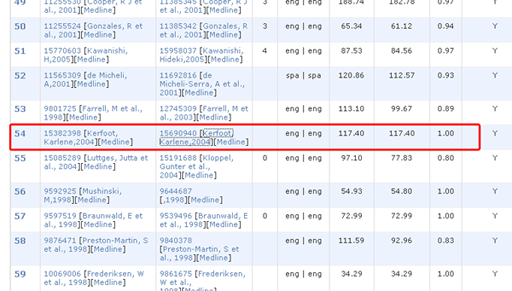Software Steckbrief | Testüberblick | Kurzfassung| Testablauf / Kommentare | Screenshots | Firmenwerbung | Links
Software Steckbrief
| Nummer | S08-15 |
| Produkt | eTBLAST |
| Hersteller | UT Southwestern Computational Biology Group |
| Web-Site | http://invention.swmed.edu/etblast/index.shtml |
| Software-Typ | Online |
| Kosteninfo | kostenlos |
| Testdatum | 03.09. 2008 |
Kurzfassung
eTBLAST ist eine ganz besondere Suchmaschine für biomedizinische Daten. Es durchsucht die MEDLINE Datenbank und analysiert die Abstracts, um Ähnlichkeiten aufzuspüren. Eigentlich war das System dazu gedacht, Paper mit ähnlichem Thema aufzuspüren. Sie haben aber bei Tests entdeckt, dass es sehr viele Dubletten gab – identische Paper mit identische Autoren in verschiedene Zeitschriften; identische Paper mit ganz unterschiedliche Autoren; identische Paper mit einem gemeinsamem Autor; identische Abstracts für Paper in unterschiedlichen Sprachen; usw.
In August 2006 haben sie angefangen, inzwischen gibt es über 74000 Einträge in der „Déjà vu“ genannter Datenbank. Dort werden die Paare aufgelistet mit Links zum jeweiligen Abstract, die Autoren, ein Übereinstimmungsindex, und weitere Angaben. Auf Grund dieser Datenbanksind inzwischen viele Paper zurückgenommen worden. Zuletzt musste ein Aufsatz von Massoumeh Ebtekar, ehemaliger iranischer Vizepräsident und Immunologe, Ende Oktober 2008 wegen des von eTBLAST aufgedeckten Plagiats zurückgezogen werden.
Wir haben das System nicht testen können, finden aber die Anwendung hervorragend, um den Kampf gegen Plagiat in wissenschaftliche Zeitschriften voranzubringen.
Screenshots
Firmenwerbung
- eTBLAST: A text similarity-based engine for searching literature collections
- „The application of text similarity searching can robustly detect highly similar text records, offering a new tool for ensuring integrity in scientific publications. Deja vu is a database of computationally identified, manually confirmed highly similar citations (abstracts and titles), as well as user provided commentary and evidence to affirm or deny a given documents putative categorization. It is available via the web and to other database curators for tagging of their indexed articles. The availability of a search tool, eTBLAST, by which journal submissions can be compared to existing databases to identify potential duplicate citations and intercept them before they are published, and this database of highly similar citations (or exhaustive searching and tagging within Medline and other databases) could be deterrents to this questionable scientific behavior and excellent examples of citations that are highly similar but represent very distinct research publications.“
Links
- Offizielle eTBLAST Website http://invention.swmed.edu/etblast/index.shtml
- Deja Vu: a Database of Highly Similar and Duplicate Citations (http://spore.swmed.edu/dejavu/)
- NatureNews: Entire-paper plagiarism caught by software – Thousands of ’similarities‘ found between papers. Published online 8 October 2008 | Nature 455, 715 (2008) | doi:10.1038/455715a (http://www.nature.com/news/2008/081008/full/455715a.html)
- NatureNews: Iranian paper sparks sense of deja vu – Allegations of plagiarism prompt journal to retract report. Published online 22 October 2008 | Nature 455, 1019 (2008) | doi:10.1038/4551019a (http://www.nature.com/news/2008/081022/full/4551019a.html)


